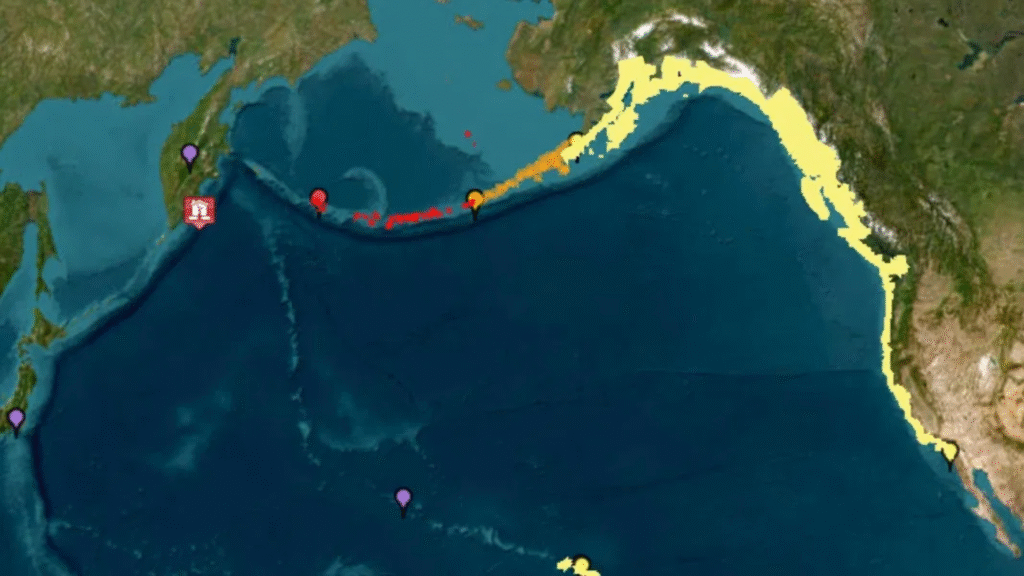
A massive earthquake measuring 8.7 magnitude on the Richter scale struck off the eastern coast of Kamchatka Peninsula in Russia late Tuesday evening, sparking widespread tsunami warnings and raising global concern across the Pacific region.
According to the U.S. Geological Survey (USGS), the powerful undersea quake hit approximately 85 miles off the Kamchatka coastline at a shallow depth of about 12 miles (20 kilometers), increasing the potential for tsunami waves to form and travel rapidly across the ocean.
The earthquake’s sheer magnitude prompted immediate action from international emergency agencies. Tsunami alerts were quickly issued for the entire U.S. West Coast, the state of Alaska, and the islands of Hawaii and Guam. Residents in those areas were urged to remain alert, monitor official emergency broadcasts, and prepare for potential coastal evacuations if necessary.
NOW: Tsunami waves slam the Russian coast near Severo-Kurilsk — triggered by powerful offshore quake.pic.twitter.com/KCR0WuhW17
— Resist Times (@resistupdates) July 30, 2025
Officials confirmed that tsunami waves have already made landfall in parts of Kamchatka, though the extent of the damage there remains unclear at this time. Russian emergency services have been deployed, and authorities are assessing infrastructure damage and potential casualties.
In the United States, the National Tsunami Warning Center issued a formal advisory for Alaska’s Aleutian Islands, which sit directly across the Pacific from the epicenter. Hawaii was also placed under tsunami watch as experts closely evaluated incoming wave data and projections. The West Coast of the continental U.S., including California, Oregon, and Washington, was placed on alert status.
Japan responded swiftly as well, issuing a tsunami advisory for several of its eastern coastal regions, including areas stretching from Hokkaido to Kyushu. The island nation, highly vulnerable to seismic activity, activated its coastal monitoring systems and began disseminating safety instructions to citizens.
Though initial fears focused on widespread Pacific destruction, it remains too early to determine the scale of any resulting tsunami waves or their potential impact on foreign coastlines. Historically, large undersea earthquakes in this region have led to significant wave activity, as seen during the 2011 Japan earthquake and tsunami disaster.
As of now, no injuries or fatalities have been reported in connection with the quake, and authorities stress that conditions are evolving rapidly. Seismologists and tsunami monitoring centers are continuing to analyze data in real time.
This is a developing story. Emergency management agencies in affected regions urge residents to stay tuned to local news and official government alerts for ongoing updates. Authorities caution that the situation may change quickly depending on wave patterns and aftershock activity.

